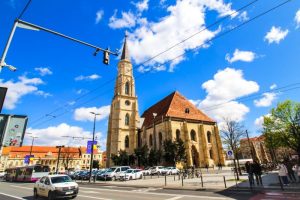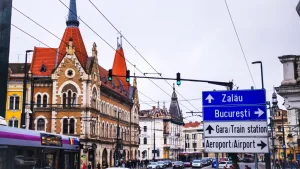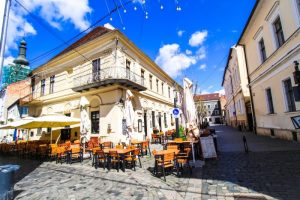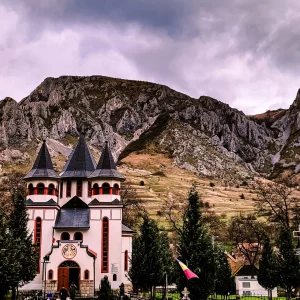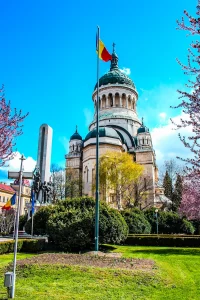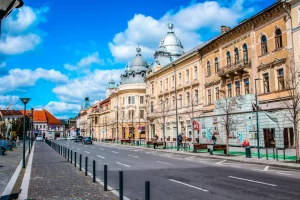Cluj-Napoca may be one of Romania’s most charming cities, but figuring out how to get around can feel a little intimidating when you first arrive. Whether you’re visiting for a weekend or planning a longer stay, understanding how Cluj public transport works is a game-changer.
I still remember my first evening here as a student: standing at a bus stop with no idea how to read the map with the bus lines, wondering which line would take me to the university and what kind of ticket I should buy.
A few months later, public transport became second nature and the wild guessing was history.
If you’re planning a short stay or even considering Cluj for a longer visit, this guide will show you exactly how to move around the city — from buses and trams to ridesharing apps like Uber and Bolt and the one mobile app locals actually use.
By the end, you’ll feel confident enough to explore Cluj like someone who’s lived here for years.
🚍 Types of Public Transport in Cluj-Napoca
1. Buses and Trams
The backbone of Cluj’s public transport system is managed by CTP Cluj-Napoca, and it includes a surprisingly efficient mix of buses, trams, and trolleybuses.
Buses are by far the most convenient, as they cover every part of the city, including the airport, and run frequently between 5:00 AM and 11:00 PM. Cluj even has several regional buses connecting villages and small cities in the surroundings to the city center.
What I really appreciate is how modern things have become — you now find digital screens at major bus stops showing the estimated arrival times, and most buses are equipped with surveillance cameras and air conditioning. Some of the newer trams even have free Wi-Fi, which makes longer rides oddly productive.
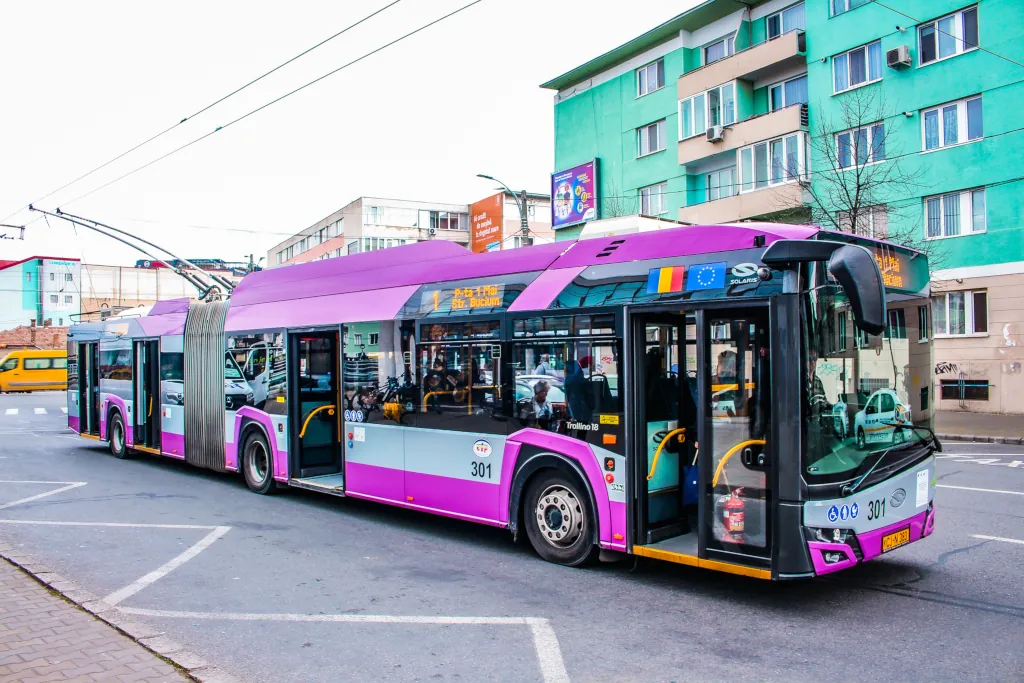
The trams are less frequent but definitely have their own charm.
When I first tried them, I half-expected an old rattling carriage — but many have been modernized, and some routes are actually quite scenic. If you’re headed through neighborhoods like Mărăști or Mănăștur, taking the tram gives you a glimpse of local life you might otherwise miss.
That said, it’s not all perfect. Heating on buses doesn’t always work well in the winter, and when summer heat kicks in, the AC isn’t always reliable. I’ve had moments where I’d rather walk than melt into my seat — or sit too close to someone else who’s doing the same. 😅
2. Taxis in Cluj-Napoca
Taxis in Cluj are widely available, especially around the train station, the airport, Unirii Square, Mihai Viteazu Square and in front of the Opera.
Reliable names to look out for are Nova Taxi, Diesel Taxi, and Napoca Taxi. Always make sure the meter is running, and avoid unmarked cars at all costs.
📝 Local tip: In front of the airport building or the Opera you will see several taxis lined up and waiting. Make sure to take the first taxi in the row.

3. Uber and Bolt
If you’d rather skip the uncertainty of taxis, both Uber and Bolt are available in Cluj — and honestly, I use them far more often than regular cabs.
They’re usually cheaper, the process feels smoother, and you don’t have to worry about negotiating fares in a language you may not speak.
- Bolt tends to respond quicker; I’ve had cars arrive within two minutes, even late at night.
- Uber is slightly pricier but usually comes with a better-quality car. They also use Google Maps, which is an advantage if you want to visit fewer known attractions outside the city.
- Be aware of surge pricing during major events like the UNTOLD Festival or Electric Castle Festival.
Make super to download one of these apps before traveling to Romania.
Also decide if you want to pay via cash, Google Pay or credit card.
By the way: you do not have to tip the driver, but it will be much appreciated 😊.
📱 The Tranzy App: Your Secret Weapon
If there’s one tool that makes Cluj’s public transport system almost foolproof, it’s the Tranzy App. Google Maps might get you around, but Tranzy is what locals actually use.
Here is where the app is super helpful:
- See real-time bus and tram locations.
- Plan your route door-to-door.
- Save your favorite stops for easy access.
- Available in English — so you don’t need to guess what “Stația Mărăști” means.
👉 Download the Tranzy App here for iOS or Android before your trip
💸 Public Transport Costs
Tickets for public transportation in Cluj are refreshingly cheap by European standards. If you are staying for a short trip in Cluj, single ride tickets will be the cheapest option.
However, if you are planning a longer stay and want to be spontaneous without having to look all the time for a ticket machine, then you should consider buying a weekly pass. This guarantees you access to all means of transportation in Cluj.
- Single ride: 5 RON (~€1.00)
- Day pass: 14 RON (~€2.80)
- Weekly pass: 60 RON (~€12.00)
Tickets are easy to buy from the purple machines at most bus and tram stops (which accept both cash and card), or directly through the Tranzy App. You can also pay via SMS — it costs a little more, but it’s super convenient when you’re in a rush or can’t find a working machine.
Just a heads up: those purple ticket machines can be temperamental. It’s not uncommon for one or two to be out of service, so having the app or SMS option as a backup is a lifesaver.
Just don’t forget to validate your ticket once on board. Ticket inspectors are active, and it’s best to stay calm and polite if approached — they take their job seriously, and getting into an argument is not worth it. Fines can be as high as 50–100 RON (€ 10–20).
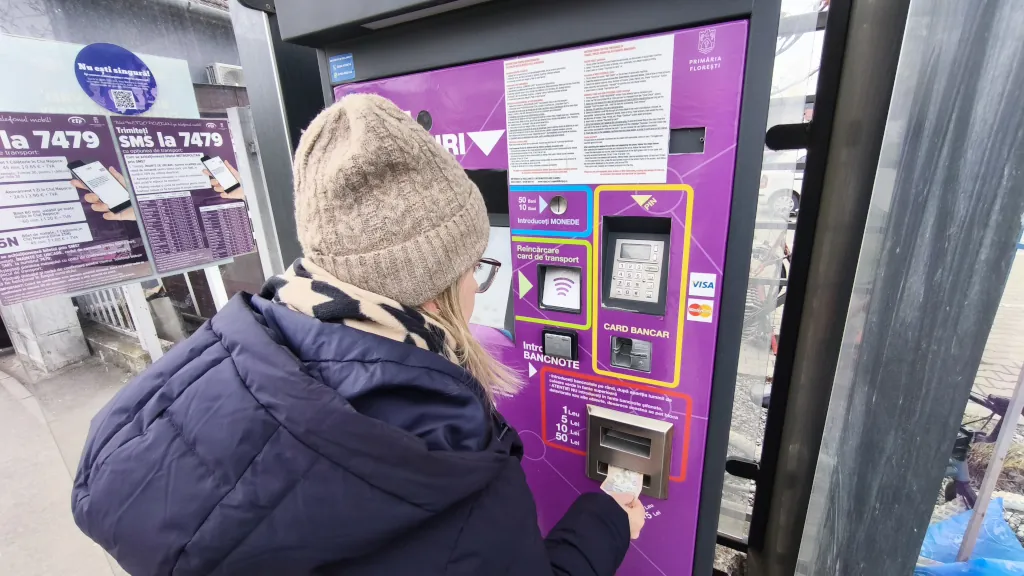
🚗 When does it make sense to rent a car?
Honestly, not if you’re staying only inside Cluj itself, since parking is a headache and buses are more than enough.
But if you want to explore beyond the city — places like Turda Salt Mine, the Apuseni Mountains, or small Transylvanian villages like Rimetea — a car makes all the difference.
Find out more about renting a car in Cluj and driving in Romania in my article Car rental in Cluj-Napoca: Everything you need to know.
🚗 Planning day trips from Cluj? Compare rental car prices here: Discover Cars
🚦When Transit Isn’t So Smooth
Now, Cluj’s transit isn’t perfect – and I am saying this as a former local who used it every day.
When school is in session, traffic becomes a different beast altogether. Buses get packed, and the lack of dedicated transit lanes means delays are pretty common. Throw in some rainy weather, and you’ve got a recipe for long, slow rides with standing room only.
And yes, when buses are crowded, the mood can shift quickly. People get frustrated, and they aren’t always shy about expressing it out loud. I’ve had a few rides where I was more entertained by the spontaneous debates than any podcast I had queued. 😂
Final Thoughts
Now that you know how to get around, the rest of your Cluj trip becomes much easier to plan.
The buses and trams will take you almost anywhere, ridesharing apps are perfect for nights out or airport transfers, and the Tranzy App ties it all together in a way that even first-time visitors will appreciate.
Despite a few flaws, the Cluj public transport system is incredibly accessible and budget-friendly. And once you learn the quirks — like which machines to avoid and what times to travel — you’ll see just how much value it adds to your trip.
So, whether you’re catching a tram through Mănăștur, grabbing a Bolt after a concert, or using the express bus to get back to the airport, you’ll soon find yourself moving around Cluj with the same ease as the locals.
And trust me — once you’ve mastered the system, the city feels even more welcoming😊.
👉 Check out my Cluj blog posts below to plan your perfect trip:
Cluj vs. Bucharest: Which Romanian City Should You Visit?
Why You Should Visit Cluj-Napoca in Romania?
Cluj-Napoca City – Complete Guide for First-Time Visitors
Best Cluj-Napoca hotels for First-Time Visitors
Best Cluj-Napoca restaurants, coffee spots and bars guide
Car rental in Cluj-Napoca: Everything you need to know

